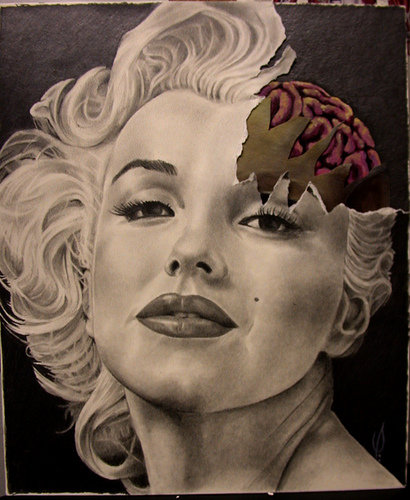The Brain’s Perception of Beauty

What makes an object beautiful? Is beauty inherent in the object itself or is it because people say the object is beautiful that we assume it is? A new study by Zhang et al. used fMRI to see what exactly goes on in our heads when we think of beauty. Using fMRI technology, they had 19 right-handed college students perform 2 tasks during the scan: they were asked to judge whether a pictograph or bone script character was beautiful or ugly and a baseline task where they were asked to judge the luminance of a square to see if it was high or low. They found that different brain regions became activated when judging beauty in either bone scripts or pictographs. When looking at beautiful judgements, areas of perceptual, cognitive, emotional, and reward processing were activated. Specifically, areas such as the orbitofrontal cortex and motor areas were found to be activated in beautiful judgements for pictographs. Beautiful judgements for bone scripts were activated by the putamen, showing a stronger beautiful experience when looking at the pictographs. For negative images or ugly images, only the visual areas of the brain were activated, which shows less involvement and integration of the stimuli. This demonstrates that the brain is not only selective about the type of stimuli it receives, preferring a pictograph over a bone script, but it also prefers positive and beautiful images over negative and ugly images.
Interestingly, according to this study, these processes seem to work differently in men and women. Using MEG, Cela-Conde et al. found that brain activity for processing beauty is bilateral for women, whereas for men, it is lateralized to the right hemisphere. The images used to test this were unknown paintings by artists in art school as well as more natural pictures depicting various landscapes. While the main activity was done by the parietal lobe, the localization was different for men and women. It has been suggested that this could be due to evolution, so the difference in spatial ability may be determined by the division of labor between hunting and gathering. It would be interesting to see whether these areas are still influenced by everyday life or if they can be localized bilaterally for both men and women. The question to dwell on is this: is it our psychology that activates these brain regions when perceiving something as beautiful or are these brain regions controlling the way we perceive beauty?
Writer: Albert Wang
Editor: Sophia Hon
Sources:
Sex-related similarities and differences in the neural correlates of beauty
Neural substrates of embodied natural beauty and social endowed beauty: An fMRI stud